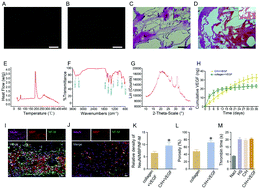Collagen/heparin scaffold combined with vascular endothelial growth factor promotes the repair of neurological function in rats with traumatic brain injury
Abstract
The objective of this study was to evaluate the therapy effects of a novel biological scaffold containing heparin, collagen and vascular endothelial growth factor (VEGF) in treating traumatic brain injury (TBI). In our research, a functional composite scaffold constituted by collagen, heparin and vascular endothelial growth factor was used to stimulate angiogenesis and improve nerve-tissue regeneration in a rat model of TBI. The composite scaffold possessed excellent mechanical properties and good porosity, and could effectively control the release rate of VEGF. Motor and cognitive functions such as motor evoked potential, Morris water maze test and modified neurological severity score were evidently improved after the scaffold was grafted onto the injury site in the rat TBI model. There was clearly improved restoration of damaged nerve tissue at the injured site. Furthermore, brain edema and inflammatory reactions were significantly alleviated. Newly formed neurons with associated synaptic structures, nerve fibers, myelin sheaths and functional angiogenesis with intact endothelium at the injury site were observed. In conclusion, our data revealed that the collagen/heparin scaffold combined with VEGF could create excellent microenvironment stimuli for damaged nerve-tissue regeneration, providing a potential strategy for treating TBI.



 Please wait while we load your content...
Please wait while we load your content...